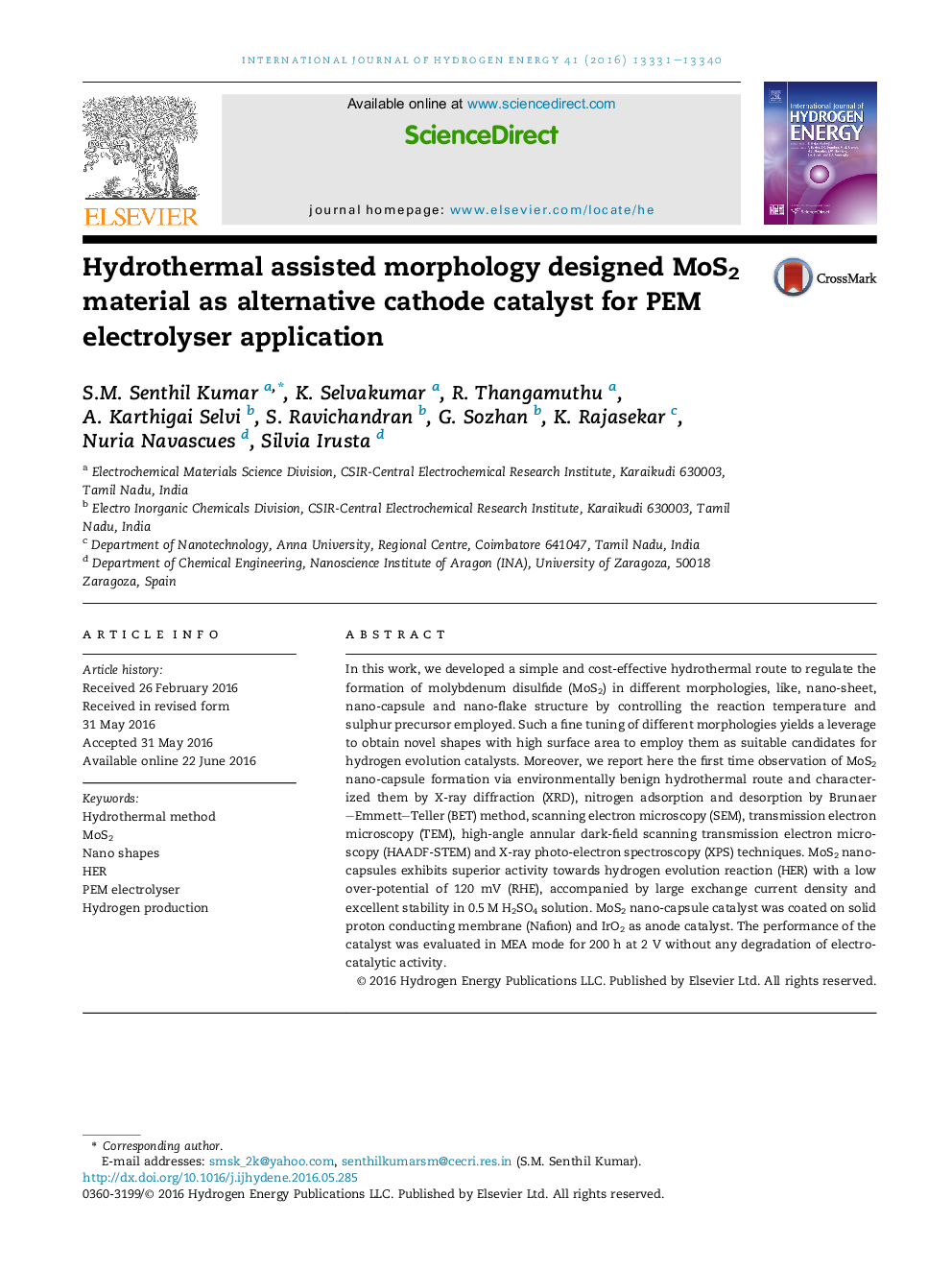| Article ID | Journal | Published Year | Pages | File Type |
|---|---|---|---|---|
| 1276446 | International Journal of Hydrogen Energy | 2016 | 10 Pages |
•Simple and environmentally benign route is demonstrated to prepare MoS2 material in three different morphologies.•A fine control over morphology and purity was achieved.•Shape dependence in catalytic activity towards HER was observed.•High surface area of nano-sphere MoS2 morphology is responsible for superior electro-catalytic activity.
In this work, we developed a simple and cost-effective hydrothermal route to regulate the formation of molybdenum disulfide (MoS2) in different morphologies, like, nano-sheet, nano-capsule and nano-flake structure by controlling the reaction temperature and sulphur precursor employed. Such a fine tuning of different morphologies yields a leverage to obtain novel shapes with high surface area to employ them as suitable candidates for hydrogen evolution catalysts. Moreover, we report here the first time observation of MoS2 nano-capsule formation via environmentally benign hydrothermal route and characterized them by X-ray diffraction (XRD), nitrogen adsorption and desorption by Brunaer–Emmett–Teller (BET) method, scanning electron microscopy (SEM), transmission electron microscopy (TEM), high-angle annular dark-field scanning transmission electron microscopy (HAADF-STEM) and X-ray photo-electron spectroscopy (XPS) techniques. MoS2 nano-capsules exhibits superior activity towards hydrogen evolution reaction (HER) with a low over-potential of 120 mV (RHE), accompanied by large exchange current density and excellent stability in 0.5 M H2SO4 solution. MoS2 nano-capsule catalyst was coated on solid proton conducting membrane (Nafion) and IrO2 as anode catalyst. The performance of the catalyst was evaluated in MEA mode for 200 h at 2 V without any degradation of electrocatalytic activity.
